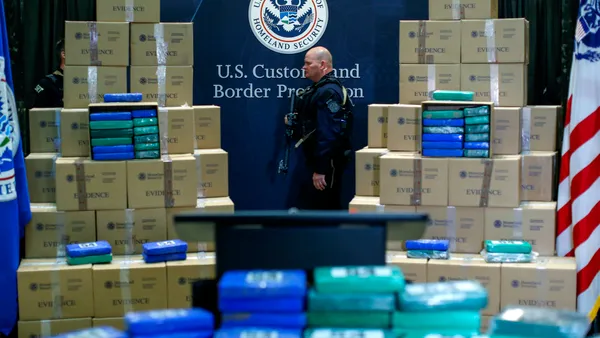Despite its namesake, inventory excess isn’t really a problem at Overstock.com. That’s for the simple reason that the online home goods retailer doesn’t hold much of its own product.
The company pioneered the dropship model back in the early days of internet shopping and today has a network of 2,600 partners that sell through the website.
In one sense, that has made the company’s model relatively immune to the operational headache of inventory pileups other retailers have contended with. But for Overstock, it’s everyone else’s excess that has been the problem.
The company’s revenue fell by 30% in 2022, and it lost some of the market share it had gained in the period since the pandemic began, which initially brought a surge in both online and home goods shopping.
As peers struggled with falling demand and inventory buildups, they have discounted heavily to goods flowing and sales from cratering. And with prices falling, Overstock lost some of its competitive advantage last year.
“It's created more people playing in our space that really can't afford to play there,” Overstock CEO Jonathan Johnson said in an interview.
Expensive, slow-moving stock
Overstock might not own most of the inventory it sells through its website, but inventory gluts at its suppliers have a major impact on the retailer’s business. And the movement and pricing of that inventory is not always a simple matter of supply-and-demand economics. Banks and other financial players play a role in the sector’s inventory and sales dynamics.
Overstock suppliers still have excess inventory bought when stock was expensive to acquire because of supply chain dynamics, Johnson explained. Now inventory is cheaper to bring in, at the same time as consumer demand is falling. But asset-based lenders that use inventory to back loans, and thus tie loan amounts to inventory value, can prevent suppliers from discounting that inventory deeply enough to move it.
“Sometimes the banks are managing those receivables,” Johnson said. “And banks don't necessarily think like retailers who need cash freed up so they can make more cash. They think, ‘We need the full return on our loans.’”
The upshot of all that is suppliers in the sector are still working through old inventory more slowly than they and retailers would prefer.
To Overstock’s advantage, in Johnson’s view, is the company’s strong cash position, which helps it pay on a quicker payment cycle — 15 to 30 days — than suppliers might find elsewhere in the industry. That helps those suppliers turn their inventory into cash and keep their financial backers happy.
Johnson told analysts in February that the company anticipates the current industry inventory glut to continue at least through the first half of 2023.
Winning over new suppliers the old fashioned way
As Overstock eyes future growth and tries to win over new suppliers and brands to sell on its website, the company has done something it doesn’t normally do: buy inventory.
Specifically, the retailer is trying to grow its presence in what it calls giftable home products such as housewares and small appliances. Items, Johnson says, that one finds on shelves of struggling retailer Bed Bath & Beyond, which has been scrambling to avoid bankruptcy in recent months.
That company’s problems have become famous. Bed Bath & Beyond’s CEO said in January that its inventory cratered in Q4 as suppliers — concerned about the retailer’s financial viability — tightened up terms and pulled back on shipping to the company.
Analysis from DataWeave in January found that Bed Bath & Beyond’s inventory availability plummeted in 2022 beginning in July and worsening through the year, while levels among its peers remained stable.
As often happens, one retailer’s loss is others’ gain. “We saw an opportunity to go to those suppliers that either weren't getting paid or canceling their contracts [with Bed Bath & Beyond],” Johnson said.
And so Overstock has been trying to win over new brands, or convince others to increase their depth of product and sales with the retailer. Some wanted assurance that their products would sell on Overstock, so the company took the rare step of purchasing inventory from some brands.
“Some of them we said, ‘Look, we know you may have questions about our model — we’re going to prove it to you; we’re going to buy some [inventory],’” Johnson said.
Had those brands plugged into Overstock’s dropship system, Johnson argued, they could have sold more, and more quickly, after the retailer cleared through the (admittedly conservative) inventory purchases it made.
“Frankly, they left money on the table,” Johnson said. “We bought some, and sold out of it.”















